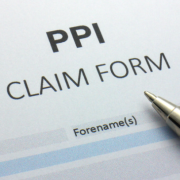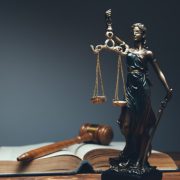
9 Protected Characteristics – Equality Act 2010
Discrimination is a problem. It is always a problem and has been for centuries. In 2019, discrimination is still an issue that faces people every day. Discrimination can come in the form of being ignored because of your gender, sexual orientation, religion, age, race, or disability. The Equality Act 2010 protects people from discrimination based on those characteristics.
This act also prohibits employers from discriminating against job applicants or employees based on protected characteristics like gender reassignment or sexual orientation. It also ensures that job advertisements do not discriminate against people with different sexual orientations.
Under this act, the term ‘protected characteristics’ includes gender reassignment and sexual orientation. Further, it allows people to claim discrimination if they are mistreated due to their gender identity or sexual orientation by an employer, a service provider, a landlord, or an insurance company. In this blog post, we will tell you about the 9 protected characteristics under the act and how you can be protected from discrimination if you belong to one of these groups.
What Are the Protected Characteristics?

The Equality Act 2010 (EqA) is a piece of UK legislation that protects people from discrimination based on age, race, gender reassignment, sexual orientation, religion or belief, marriage or civil partnership, disability, and pregnancy or maternity. These nine characteristics are known as ‘protected characteristics.’
Under EqA, discrimination based on gender reassignment, marriage or civil partnership, pregnancy or maternity, and religion or belief is illegal. These characteristics also include association with someone close to them who falls under the definition of one of the protected characteristics.
The EqA’s protected characteristics also include age group (for example, young people), sexual orientation (for example, gay men), country of origin (for example, people from a particular country), and so on.
List of 9 Protected Characteristics
The nine protected characteristics protected by the Equality Act are age, race, sex, gender reassignment, sexual orientation, religion or belief, marriage or civil partnership, disability and pregnancy or maternity. The act makes it illegal to be treated unfairly for reasons that relate to any of these characteristics.
For example, it is illegal to discriminate against a person because they are age. This is known as direct discrimination.
- It is illegal to treat a person differently due to their race or ethnic origin. This is known as indirect discrimination.
- It is also illegal to treat a person differently based on their gender reassignment or sexual orientation.
- Excluding someone from a part-time job or service is unlawful because of marriage or civil partnership status. This is known as discrimination due to marital or civil partnership status.
- It is illegal to discriminate against someone because of their disability. This includes physical, mental, intellectual and other disabilities.
- Finally, it is illegal to discriminate against women during pregnancy or maternity leave.
Age
Age is one of the nine protected characteristics under the Equality Act 2010. This law prohibits discrimination against someone due to their age. The definition of age under this act is any age range or group, which makes it illegal to discriminate against someone based on their age or age group. Under the act, age discrimination is treated as unfair treatment due to a person’s age or age group.
Therefore, treating older or younger individuals differ from one another is illegal. The Equality Act 2010 protects people of all ages from discrimination, so no one should ever be denied opportunities or treated unfairly because of their age.
Disability
Disability is one of the protected characteristics listed in the Equality Act 2010. The act helps to protect people with disabilities from discrimination in a variety of settings, including employment. It prohibits discrimination against individuals based on their disability in employment, education, housing, and public services.
One of the key features of the act is that it explicitly prohibits discrimination against employees based on their protected characteristics, including disability. This means employers must ensure they are not discriminating against employees for any protected characteristic, including disability.
Additionally, employers must take care to ensure that they are not discriminating against an employee based on their protected characteristics (such as disability discrimination) without a legitimate business reason. Finally, employers must ensure that they are providing reasonable accommodations to disabled employees as needed to avoid discrimination and ensure equal opportunities for all employees.
Gender Reassignment

Gender reassignment is a protected characteristic under the Equality Act, which makes it illegal to discriminate against an individual based on their gender identity. This discrimination can take many forms, including bullying, exclusion, or calling someone derogatory names.
Gender reassignment discrimination occurs when an organization or employer treats an employee less favourably because they are trans or associated with someone who is trans. The act of discrimination can be subtle, and gender-based stereotypes can persist even in organizations that seek to be gender-inclusive.
Therefore, employers must identify any disadvantages faced by trans employees and take steps to address them so they are equally represented in the workplace. Regardless of whether gender reassignment involves surgery or not, anyone who faces discrimination due to their gender identity is protected under the Equality Act.
Marriage and Civil Partnership
The protected characteristic of gender reassignment under the Equality Act 2010 means all marriage and civil partnerships are legally recognized as protected characteristics. The act also protects sexual orientation and religion or belief-protected characteristics of equality.
Marriage is a union between a man and a woman or between a same-sex couple, and civil partners must not be treated less favourably than married couples. It is against the law to discriminate against anyone because of their marital status or sexual orientation.
Pregnancy and Maternity
Pregnancy and maternity are protected under the Equality Act 2010, meaning it is illegal to discriminate against someone due to their pregnancy or maternity. The protected period for maternity starts as soon as the employer knows, believes, or suspects that the person is pregnant. This means that discrimination based on pregnancy and maternity is illegal in a number of settings, including at work, in healthcare institutions and during recruitment processes.
It is also unlawful to treat a pregnant woman differently from other employees in order to reduce her chances of having a successful pregnancy or returning to work after childbirth.
Race
Race is a protected characteristic under the act, and it is against the law to discriminate based on race. In addition to race being a protected characteristic under the act, it is also unlawful to discriminate based on race. There are a few exceptions where race-based discrimination can be allowed, but these must be explicitly stated in the law.
The nine protected characteristics listed in the act are age, disability, gender reassignment, marriage and civil partnership, race, religion or belief, sexual orientation, and pregnancy and maternity.
Religion or Belief

Religion and belief are protected characteristics under the Equality Act 2010. This means that individuals with religious or belief-based identities are protected from discrimination in England, Scotland, and Wales. In addition, the act protects against discrimination against those with religious or belief-based identities, including Muslims, Christians, Sikhs, Jews, and Mormons.
The act also permits exceptions to its protections depending on the protected characteristic being targeted. For example, it may be legal to tolerate a difference of opinion in cases where discrimination is based on gender equality; however, sexual orientation discrimination is not permitted. In addition, citizens can access guidance and advice on protected characteristics via the Citizens Advice website.
For example, suppose you feel you have experienced discrimination based on your religion or belief. In that case, speaking to a qualified lawyer is important to ensure all your options are available.
Sex
Sex is one of the nine protected characteristics of the Equality Act 2010, which makes it illegal to discriminate against someone based on their sex. This means that discrimination against women and men because of their gender is prohibited. The act also protects people in England, Scotland, and Wales from discrimination based on their sex. In addition, all sexual orientation, gender identity, and gender reassignment are covered under this act.
Sexual Orientation
Sexual orientation is one of the nine protected characteristics listed in the Equality Act 2010 that prohibits discrimination. Sexual orientation covers gender identity and sexual orientation, including lesbian, gay, bisexual, or transgender, as well as those who are heterosexual. Sexual orientation is one of the categories protected under this act.
It refers to a person’s sexual orientation, which can be straight, gay, lesbian, or bisexual. The Equality Act 2010 protects people from discrimination due to their sexual orientation and if they are associated with someone with a protected characteristic.
In other words, it protects individuals regardless of whether they belong to a group that has historically been discriminated against. For example, it would be illegal to discriminate against a gay man because sexual orientation was one of his protected characteristics. It would also be illegal to discriminate against a woman because she is married to a woman or has a civil partnership with another woman.
Why Are Protected Characteristics Important?
- The Equality Act 2010 outlines the main protected characteristics of workplace discrimination. Race, gender, sexual orientation, age, disability, marriage or civil partnership status, gender reassignment, religion or belief, and pregnancy and maternity leave.
- The act covers not all characteristics; some are subject to additional legal protection. For example, race is a protected characteristic in most employment equality legislation. Still, a person’s race cannot justify discrimination based on skin colour or the use of racial epithets.
- Knowing these protected characteristics can help employees avoid discrimination and provide them with a reference point should they experience any form of discrimination at work. Additionally, it helps employers understand the needs of their employee base and design solutions that best suit their workforce.
- Private Limited Companies can create inclusive workplaces free from discrimination by taking note of these characteristics and ensuring equality for all employees across different backgrounds at work.
What is the Term for People With Multiple Protected Characteristics?
The word “intersectionality” has several meanings. First, it may describe a person with more than one protected characteristic who possesses an identity and experiences.
Conclusion
Protected characteristics are specific to a particular group of people subjected to discrimination in the past. They are a benchmark for equality and civil rights for people with that characteristic. Protected characteristics help ensure equality in the workplace and promote gender equality, sexual orientation equality, age equality, and race equality.
They act as a benchmark individual with those characteristics can strive to meet. Recognizing protected characteristics is essential in eliminating discrimination against marginalized groups and encourages inclusion.
FAQ – 9 Protected Characteristics

What are protected characteristics in schools?
It is unlawful to treat an employee differently at work, or in any educational setting, after revealing a protected characteristic. This means that you cannot discriminate against someone based on race, creed, colour, sex, gender identity or expression, age, national origin, ancestry, religion, physical or mental disability, veteran status, marital or domestic partnership status, affectional or sexual orientation (or any other characteristic protected by applicable law).
For example, if you are a teacher and you discover that one of your students has a religious belief that differs from yours, you cannot mistreat the student or act negatively towards them. You are also not allowed to display negative attitudes towards religious beliefs.
What is Section 149 of the Equality Act 2010?
Section 149 of the Equality Act 2010 is designed to prevent discrimination, harassment and victimization. It seeks to advance equality of opportunity between people who share a protected characteristic and those who do not. The 9 protected characteristics currently listed under Section 149 of the Equality Act 2010 are age, disability, gender reassignment, marriage and civil partnership, pregnancy and maternity, race, religion and belief, sex, and sexual orientation.
The purpose of Section 149 is to promote good relations between different groups of people, including those who share a protected characteristic and those who do not. There are no known outstanding effects for Section 149 of the Equality Act 2010.
What are the main features of right to equality Class 9?
Under the Right to Equality, no citizen can be discriminated against based on religion, ethnicity, sex, or place of birth.
Everyone should have equal rules, from the president to the smallest farmers.
What are the main points of the Equality Act 2010?
The Equality Act 2010 is a landmark piece of legislation that aims to protect people from discrimination based on nine protected characteristics. These characteristics are gender reassignment, marriage and civil partnership, pregnancy and maternity, race, religion and belief, sex, sexual orientation and disability.
The act makes it unlawful to discriminate against anyone based on these characteristics in the workplace, the provision of services, education, housing, leisure activities and access to goods and facilities. In addition, Section 4 of the act sets out specific exceptions to these protections in certain circumstances.
While the act may have some effects, it is still relatively new, so it’s difficult to say for certain. However, as the act progresses and more people are aware of its importance, more cases of unfair discrimination will likely be brought to light.
Why is age a protected characteristic?
Age is a protected characteristic under the Equality Act 2010 and is defined as a particular age or a range of ages. This means employers cannot directly or indirectly discriminate against someone because of their age. However, age discrimination can manifest itself in many different ways, such as specifying a certain number of years of experience in a job recruitment exercise which may indirectly discriminate against younger applicants.
Age discrimination can damage a person’s career and sense of self-worth, so the law is in place to protect individuals from such discrimination.
Why is class not a protected characteristic?
Under the Equality Act 2010, people in England, Scotland and Wales are protected from discrimination based on nine protected characteristics. However, class is not one of them.
Class is not a protected characteristic because it is not listed among the nine protected characteristics. In other words, if you are treated differently based on your class, you can file a complaint with the government agency enforcing the Equality Act 2010.
However, keep in mind that your class could be one of the protected characteristics under future revisions of the act. So, stay up-to-date on equality laws if you want to protect yourself from discrimination in the future.





